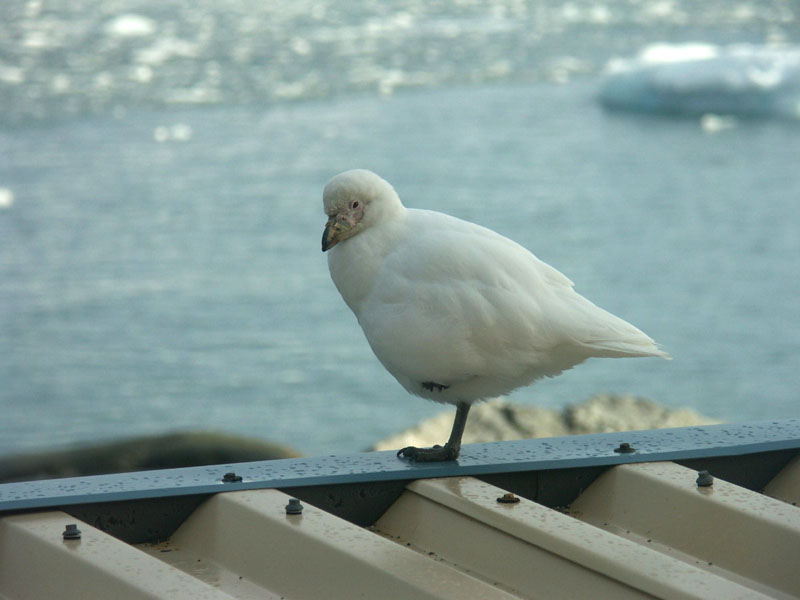
Question: Is this an antarctic chicken doing yoga on a rooftop?
Answer: No, it is Snow White…..
But not the fairy tale kind. While the bird may look like a chicken its scientific name Chionis alba loosely translates into Snow White –or more commonly, the snowy sheathbill. There is only one other species of sheathbill – the black-faced and it lives further north. Both species have in common a thick beak, the lower portion partially covered by a horny sheath – hence the name sheathbill.
Sheathbills also have chicken-like feet. These birds are not swimming or dabbling birds so lack webbed feet. In fact, the snowy sheathbill is the only Antarctic bird without webbed feet. The image below clearly shows two of its three ‘toes’ as the bird (yes, that is an identification band on its leg) seemingly enjoys a float in one of our outdoor aquaria – a most unlikely birdbath! (Michelle introduced this sheathbill in her “Aquarium and Blizzards” entry).
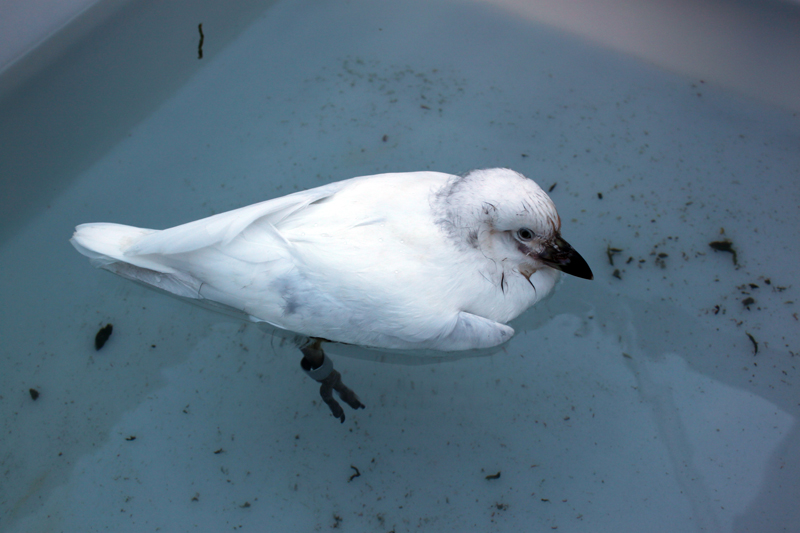
Both images also illustrate the bright white feathers responsible for the snow white moniker. Some think the plumpness of the body makes them look like a dove. The Spanish name for the bird is Antarctic paloma which means dove.
So why the yoga pose in the opening image? Many birds – especially wading birds – have perfected this balancing act. In part, standing on one leg reduces the amount of heat lost through unfeathered ‘chicken legs’. The sheathbill not only stands one legged, but can hop long distance pogo-style on one leg. Additionally, the legs of many bird species have a special blood flow adaptation ("rete mirabile") which further minimizes heat loss. Arteries, bringing warm blood into the legs, are plumbed close to the veins returning blood to the bird's heart. The returning venous blood is slightly warmed by the relative heat of arteries. At the same time the arteries are cooled by the veins and when delivered to the bird’s feet are closer to the surrounding air temperature and thus don’t lose as much heat as they would if they were at body temperature.
Looks like a chicken but doesn’t sound like one. Rather than a “cluck cluck” the bird utters a series of low bass mutt-- mutt--mutts. No the rooster does not announce dawn. Sheathbills do not eat like chickens. They are omnivores in the extreme. As a shore bird, they are known to peck limpets on the rocks at water’s edge and graze on drift algae too. They will also eat ahem - dead stuff and seal scat. Ugh. And our Snow White has a touch of the fairy tale wicked queen stealing food other birds bring ashore for their nesting chicks. Worse yet, they may pirate away a penguin egg or even small chick!
Yet, despite this evil trait the snowy sheathbill is revered by some. For example, there is the SSBS – the Snowy Sheathbill Society. Check out the website here. Palmer Station’s IT guru Jeff is a card-carrying (and card playing) member of SSBS. Over his many seasons on station he has designed various sheathbill based items. His artistry (collaged below) includes stickers, tshirts, magnets, coffee mugs and of course playing cards.
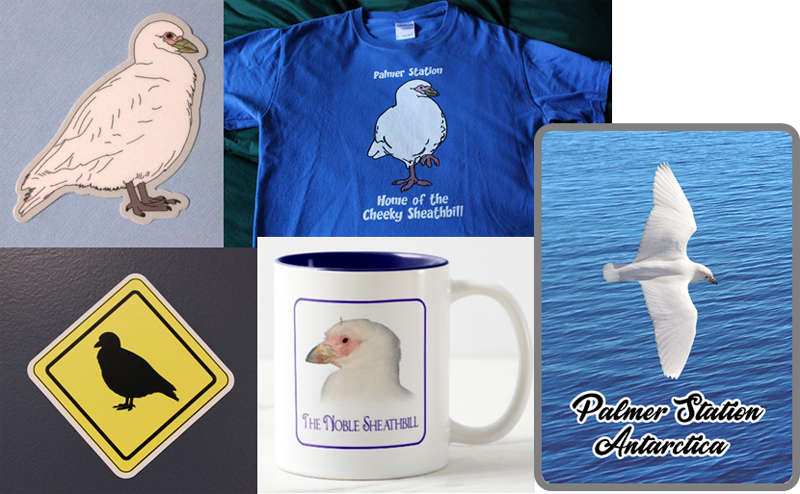
Soon the sheathbills will join many of the other local birds, in particular penguins, who have already headed north or back out to sea for the winter. It was a true joy last week when the station loud speaker interrupted the day announcing a Gentoo penguin by the pumphouse. You may recall from my "Ch-Ch-ch-changes" that a new flock of support crew arrived a few weeks ago. Many of these “winter overs” have worked at the South Pole Station where there is little wildlife. A penguin sighting is quite exciting even a lone Gentoo as seen below.
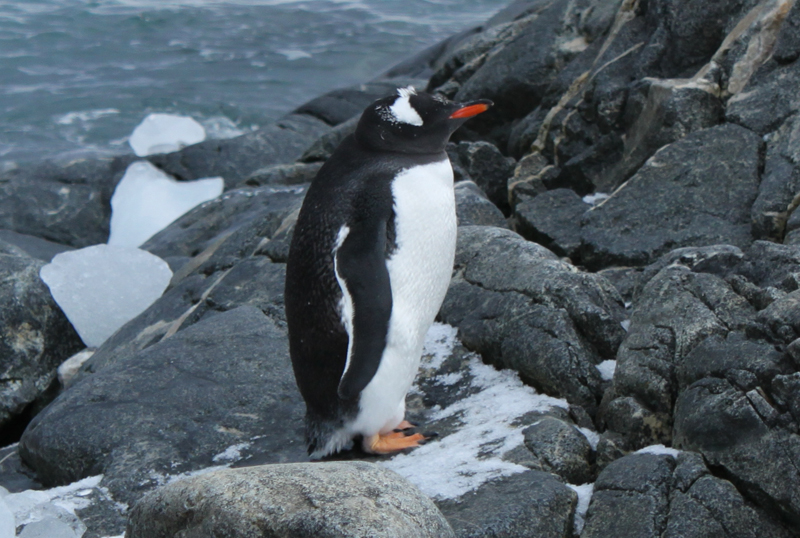
Gentoos are the largest of the local penguins and are characterized by having orange beak and (webbed!) feet and bright white eyebrows. This bird’s brow is odd and at first I thought it had snow on its head. Upon closer inspection of the image, I realized loose white feathers were responsible. Then I noticed the edge of the flipper was fuzzy – again loose feathers. The bird was molting – shedding its feathers for shinier new and renewed waterproofed ones.
Numerous photographers and bird admirers flew to the pumphouse following the announcement. Included amongst the winter-overs were members of our team. Even though we each have now seen many penguins, any opportunity to see a local bird is indeed something to pursue and celebrate.
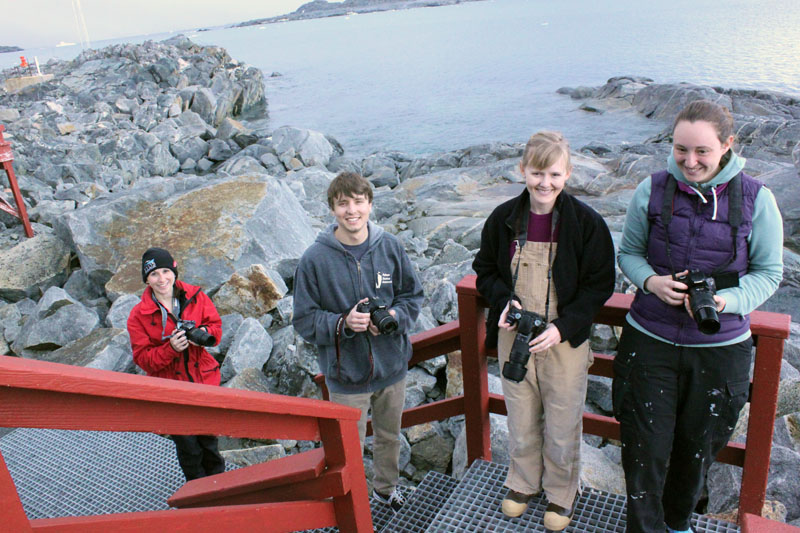
So too says the National Audubon Society in declaring 2018 the Year of the Bird. In part because the year is the 100th anniversary of the signing of the Migratory Bird Treaty Act. This special legislation helps protects birds and their habitats for generations to come. Check with your local Audubon Society for ways you can help and celebrate the birds in your world!